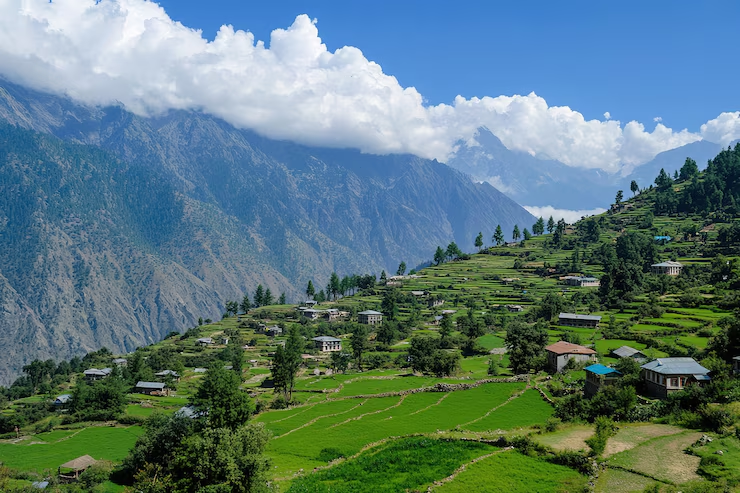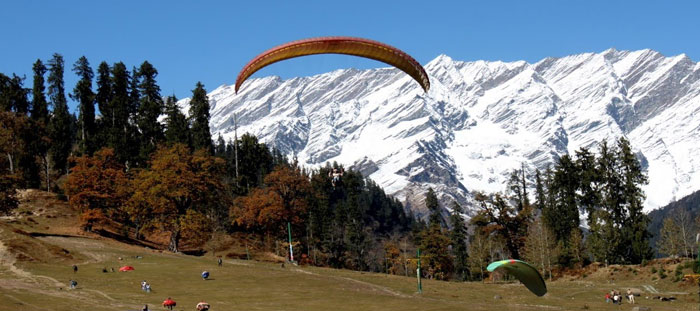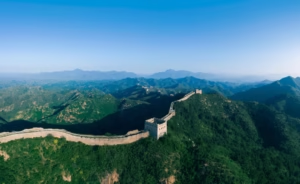Kangra: The Land of Gods, Valleys, and Ancient Heritage

Nestled in the lap of the mighty Himalayas, Kangra is one of the most beautiful and culturally rich districts of Himachal Pradesh, India. Known for its breathtaking landscapes, ancient temples, colorful festivals, and deep-rooted history, Kangra is a land where nature, spirituality, and tradition blend perfectly.
Let’s take a deep look into everything that makes Kangra special — its geography, history, culture, temples, festivals, and more.
Geography: A Valley of Scenic Beauty
Kangra lies in the western part of Himachal Pradesh, bordered by Chamba, Mandi, Hamirpur, and Una districts. The district is located in the lower Himalayan region, making it a land of valleys, rivers, and hills.
The famous Kangra Valley is shaped by the Beas River, which flows through the district. The snow-capped Dhauladhar Range adds a stunning backdrop to the landscape. Forests of pine, deodar, oak, and rhododendron trees cover the hills, creating a green and peaceful environment.
With its pleasant climate and rich biodiversity, Kangra is ideal for agriculture, tourism, and adventure activities like trekking and paragliding.
History: A Land of Warriors and Devotion
Kangra is one of the oldest regions in India. It was once the center of the powerful Trigarta Kingdom, mentioned in the Mahabharata. The region later came under the rule of the Katoch dynasty, one of the oldest surviving royal families in the world.
The area faced many invasions. In the 10th century, Mahmud of Ghazni attacked and looted the Kangra Fort, which was known for its wealth. Later, the Mughals and then the Sikhs took control. During the British period, Kangra became part of British India after the Anglo-Sikh war in 1846.
Despite facing earthquakes and wars, the spirit of Kangra remained strong. The region continued to be a center of art, religion, and culture.
https://sypertimes.com/shimla-the-queen-of-hills-history-and-geography/
Culture: A Colorful Tapestry of Traditions
Kangra’s culture is rich, vibrant, and deeply spiritual. The people are humble and proud of their heritage. They mostly speak Pahari, though Hindi is widely understood.
Traditional Dress
Men wear a kurta-pyjama with a woolen jacket and the famous Kullu cap, while women wear colorful ghagras or salwar-kameez with embroidered shawls. The dress varies slightly in different areas but reflects the local customs and climate.
Kangra Painting
One of the most famous contributions of Kangra to Indian art is the Kangra miniature painting style. Developed in the 18th century under the patronage of local kings, this art form is known for its fine lines, natural colors, and romantic themes — often depicting scenes from the life of Radha and Krishna.
Music and Dance
Folk music and dance play an important role in local life. Jhamakra, Dhaman, and Chhinj are popular dances performed during festivals and special occasions.

Temples: A Divine Journey
Kangra is often called “Dev Bhumi”, the Land of Gods, due to its many ancient temples. Some of the most famous temples include:
1. Brajeshwari Devi Temple (Kangra Devi Temple)
Located in Kangra town, this Shakti Peeth is one of the most important temples in North India. It is believed that the breast of Goddess Sati fell here. Though it was destroyed many times in history, it has always been rebuilt with devotion.
2. Chamunda Devi Temple
Situated 10 km from Dharamshala, this temple is dedicated to Goddess Durga in her fierce form, Chamunda. The temple is located beside the Baner River with scenic views of the Dhauladhar hills.
3. Baijnath Temple
This ancient Shiva temple, built in 1204 AD, is known for its stone architecture and spiritual importance. It is believed that Ravana worshipped Lord Shiva here to get his powers.
4. Masroor Rock-Cut Temples
These are a group of 15 rock-cut temples carved from a single rock. The temples, believed to be from the 8th century, are dedicated to Lord Shiva and are often compared to the rock temples of Ellora.
Festivals: A Celebration of Life and Faith
Kangra celebrates many festivals with great enthusiasm, combining religious devotion with local customs.
Lohri and Makar Sankranti
In January, people celebrate the end of winter with bonfires, folk songs, and dances. It’s a time for community bonding and joy.
Navratri
Twice a year, devotees worship Goddess Durga during Navratri. Temples like Brajeshwari and Chamunda are filled with pilgrims, and colorful fairs (melas) are organized.
Dussehra
Unlike in other parts of India, in some areas of Himachal, Dussehra is celebrated not with burning effigies, but with processions of local deities, showcasing the unique Devta culture of the region.
Kangra Festival
This is a cultural event organized by the Himachal tourism department to showcase local art, craft, music, and dance. It attracts tourists and gives a platform to local artists.
Tourist Attractions: Nature Meets Heritage
Kangra has something for every kind of traveler — whether you’re a nature lover, a spiritual seeker, or a history buff.
Dharamshala and McLeod Ganj
These twin towns are famous for their Tibetan culture, monasteries, and being the home of His Holiness the Dalai Lama. The peaceful environment, along with places like the Namgyal Monastery and Bhagsu Waterfall, attract visitors from all over the world.
Palampur
Known as the Tea Capital of North India, Palampur is surrounded by tea gardens and pine forests. The town is also home to the Tashi Jong Monastery and offers beautiful walking trails.
Kangra Fort
Located on a hilltop, the Kangra Fort is one of the largest and oldest forts in India. The view from the top, overlooking the confluence of the Banganga and Majhi rivers, is breathtaking.

Economy: A Balance of Tradition and Growth
The economy of Kangra is mainly based on:
- Agriculture: Main crops include wheat, maize, rice, and pulses.
- Horticulture: Apples, plums, and peaches are common in the higher areas.
- Tea Farming: Kangra tea has a GI (Geographical Indication) tag and is known for its unique flavor.
- Tourism: With increasing tourism, many people are now involved in hospitality and related businesses.
Handicrafts, especially wood carving, weaving, and painting, also support the local economy.
Education and Modern Development
Kangra has made good progress in education. There are many schools and colleges, including Central University of Himachal Pradesh and CSK Himachal Pradesh Agricultural University in Palampur. The literacy rate is above the national average, and efforts are being made to improve digital education and health services.
Infrastructure like roads, internet, and public transport is improving, though some remote areas still need better connectivity.
Conclusion: Kangra — A Timeless Treasure
Kangra is a district where ancient traditions meet natural beauty and modern aspirations. Its rich history, spiritual depth, and cultural charm make it not just a tourist destination, but a place that touches the soul.
Whether you’re walking through a peaceful forest trail, attending a colorful festival, or meditating in a quiet temple, Kangra offers an experience that stays with you forever. It’s not just a district — it’s a living story of faith, nature, and resilience.




